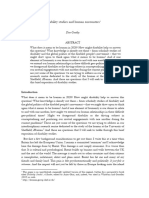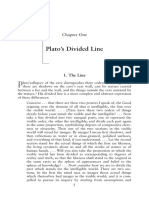0% found this document useful (0 votes)
128 views10 pagesICT Trading Strategy-A Quick Guide
The ICT Trading Strategy is a systematic approach developed by the Inner Circle Trading community that focuses on understanding market dynamics, price action, and liquidity rather than relying on traditional indicators. Key principles include analyzing price movements, recognizing market structure, and identifying order blocks to enhance trading decisions. By implementing this strategy effectively, traders can improve their market understanding, adaptability, and risk management, ultimately increasing their chances of success in trading.
Uploaded by
parhamahmdi99Copyright
© © All Rights Reserved
We take content rights seriously. If you suspect this is your content, claim it here.
Available Formats
Download as DOCX, PDF, TXT or read online on Scribd
0% found this document useful (0 votes)
128 views10 pagesICT Trading Strategy-A Quick Guide
The ICT Trading Strategy is a systematic approach developed by the Inner Circle Trading community that focuses on understanding market dynamics, price action, and liquidity rather than relying on traditional indicators. Key principles include analyzing price movements, recognizing market structure, and identifying order blocks to enhance trading decisions. By implementing this strategy effectively, traders can improve their market understanding, adaptability, and risk management, ultimately increasing their chances of success in trading.
Uploaded by
parhamahmdi99Copyright
© © All Rights Reserved
We take content rights seriously. If you suspect this is your content, claim it here.
Available Formats
Download as DOCX, PDF, TXT or read online on Scribd
/ 10




























































































